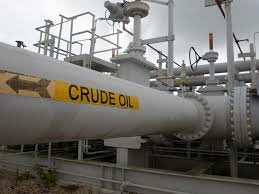New York
Oil prices rose on Tuesday as Wall Street surged and the International Energy Agency (IEA) increased its oil demand forecast for 2020, but gains were capped by worries about a second wave of coronavirus cases.
Brent crude futures LCOc1 were up 59 cents, or 1.5%, to $40.31 a barrel by 11:13 a.m. (1514 GMT.) U.S. West Texas Intermediate crude (WTI) CLc1 rose 51 cents, or 1.4% to $37.63 a barrel.
Oil prices were bolstered as U.S. stocks opened higher on Tuesday after a record increase in May retail sales revived hopes of a swift post-pandemic economic rebound, with sentiment also lifted by data showing reduced COVID-19 death rates in a trial of a generic steroid drug.
In its monthly report, the IEA forecast oil demand at 91.7 million barrels per day (bpd) in 2020, 500,000 bpd higher than its estimate in May’s report, citing higher than expected consumption during coronavirus lockdowns. “The rest of the world appears to be improving with stronger margins in Europe and backwardation popping up in many products markets,” said Scott Shelton, energy specialist at United ICAP.
“With freight very cheap, the prospects of WTI may easily improve as the arb (arbitrage) could open easily and generate enough export demand to balance it again.” Still, the IEA said a fall in flying because of the virus outbreak meant the world would not return to pre-pandemic demand levels before 2022.
Oil supplies in May plunged by nearly 12 million bpd, the IEA said, with the Organization of the Petroleum Exporting Countries and its allies including Russia – a group known as OPEC+ – reducing their output by 9.4 million bpd.
That means OPEC+ hit 89% compliance with agreed cuts in May, the IEA said.
OPEC+ agreed this month to extend production cuts of 9.7 million bpd through July. It also called on members that have not been complying to make up commitments with extra cuts later.
Iraq, which had one of the worst compliance rates among the major producers, has already made deep cuts to its crude supplies to Asia in July.
U.S. shale producers are also reducing drilling in response to the collapse in oil demand.
Production from seven major U.S. shale formations is likely to drop to close to a two-year low of 7.63 million bpd by July, the Energy Information Administration said on Monday.
Despite the prospect of reduced supply, concerns about a second wave of lockdowns from rising coronavirus infection rates weighed on the market.
Coronavirus cases rose to more than 8 million worldwide by Monday, with infections surging in Latin America, while the United States and China are dealing with fresh outbreaks.
A full U.S. economic recovery will not occur until the American people are sure that the epidemic has been brought under control, Federal Reserve Chair Jerome Powell said on Tuesday.—Reuters










